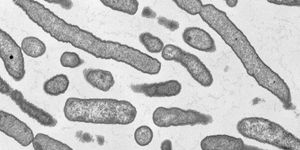Harnessing The Power of Synthetic Lethality
Studies into genome sequencing has pushed researchers to harness the power of "synthetic lethality" in exploiting cancer-specific genetic defects and eventually identify therapeutic targets.
Scientists at San Diego branch of Ludwig Institute for Cancer Research and University of California San Diego School of Medicine have observed that inhibition of a critical enzyme in cancer cells led to reduced tumor growth. These findings were examined in mouse models of breast and ovarian cancer.
Results were reported in the Proceedings of the National Academy of Sciences (PNAS) and describe synthetic lethality is a result of non-lethal mutations become fatal when combined in cells. One model organism for this phenomenon is species of yeast, Saccharomyces cerevisiae, that provides an excellent genetic tool for synthetic lethal relationships.
Learn more about synthetic lethality:
Using these model organisms, researchers were able to pinpoint an enzyme referred to as Flap Endonuclease 1 (FEN1). The DNA structure-specific endonuclease is involved in repairing and replicating DNA. Specifically, blocking their function in cancer cells and will ultimately inhibit tumor growth.
Source: Science Daily









